|
September 2006
Ozone Hole NASA OMI
OMI Images

The Ozone Monitoring Instrument
(OMI) is a nadir-viewing, wide-field-imaging UV and visible spectrometer
designed to monitor ozone and other atmospheric species including aerosols. It
is the key instrument on EOS AURA for monitoring the recovery of the ozone layer
in response to the phase out of chemicals, such as CFCs. OMI will measure key
atmospheric pollutants identified by the U.S. Environmental Protection Agency as
posing serious threats to human health and agricultural productivity: O3, NO2,
SO2 and aerosols. OMI effectively continues the TOMS record for total ozone
measurements. It is a contribution of the Netherland's agency for aerospace
programs (NIVR) and also of Finland's Finnish Meteorological Institute (FMI) to
the EOS AURA mission.
INSTRUMENT OBJECTIVE:
|
- Continue the long-term
monitoring of global total ozone trends from satellite measurements
that began in 1970 with BUV on Nimbus-4
|
|
- Map ozone profiles at
36 x 48 km, a spatial resolution never achieved before.
|
|
-
Measure
key air quality components such as NO2, SO2, BrO, OClO, and aerosol
char.
|
|
- Distinguish between
aerosol types, such as smoke, dust, and sulfates. Measure cloud
pressure and coverage, which provide data to derive tropospheric
ozone.
|
|
- Map global
distribution and trends in UV-B radiation.
|
OMI : Ozone Monitoring Instrument
The
OMI
instrument will distinguish between aerosol types, such as smoke,
dust, and sulfates, and can measure cloud pressure and coverage, which provide
data to derive tropospheric ozone.
OMI
will continue the TOMS
record for total ozone and other atmospheric parameters related to ozone
chemistry and climate. OMI
measurements will be highly synergistic with the other instruments on the
EOS
Aura platform.
The
OMI
instrument employs hyperspectral imaging in a push-broom mode to
observe solar backscatter radiation in the visible and ultraviolet. The
hyperspectral capabilities will improve the accuracy and precision of the total
ozone amounts and will also allow for accurate radiometric and wavelength self
calibration over the long term.
The instrument is a contribution
of the Netherlands's Agency for Aerospace Programs (NIVR) in collaboration with
the Finnish Meteorological Institute (FMI) to the
EOS
Aura mission.
|
OMI
Parameters |
|
The instrument observes Earth's backscattered
radiation with a wide-field telescope feeding two imaging grating
spectrometers. Each spectrometer employs a
CCD
detector.
Onboard calibration includes a white light
source, LEDs, and a
multi-surface solar-calibration diffuser. A depolarizer removes the
polarization from the backscattered radiation.
|
|
|
Item |
Parameter |
|
Wavelength range: |
|
|
Visible: |
350
- 500 nm |
|
UV: |
UV-1, 270 to 314 nm,
UV-2 306 to 380 nm |
|
Spectral resolution: |
1.0
- 0.45 nm
FWHM |
|
Spectral sampling: |
2-3
for FWHM |
|
Telescope
FOV: |
114¡
(2600 km on ground) |
|
IFOV: |
3
km, binned to 13 x 24 km |
|
Detector: |
CCD:
780 x 576 (spectral x spatial) pixels |
|
Mass: |
65
kg |
| Duty
cycle: |
60
minutes on daylight side |
|
Power: |
66
watts |
| Data
rate: |
0.8
Mbps
(average) |
| |
|
Pointing requirements (arcseconds) (Platform+instrument, pitch:roll:
yaw, 3s): |
|
Accuracy: |
866:866:866 |
|
Knowledge: |
87:87:87 |
|
Stability (6 sec): |
87:87:87 |
|
Physical Size: |
50 x
40 x 35 cm |
|
 |
|
The white
area on the images is where data cannot be retrieved in the earth's
shadow or polar night regions by the satellite. |
|
TOMS |
OMI |
|
Sep 1,2005
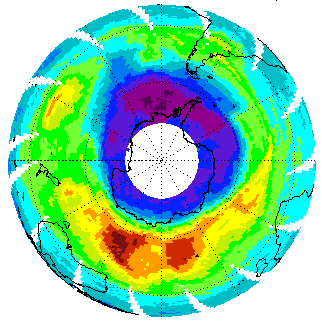
|
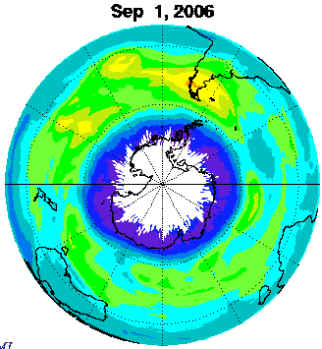 |
|
Sep 2,2005
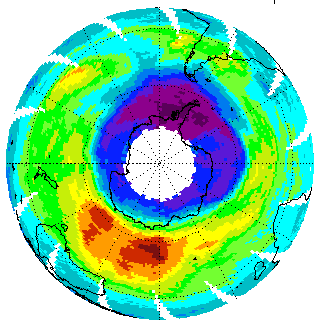
|
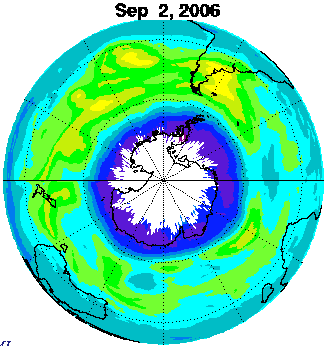
|
|
Sep 3,2005
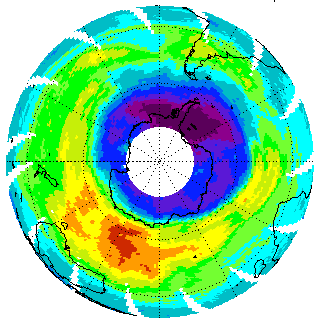
|
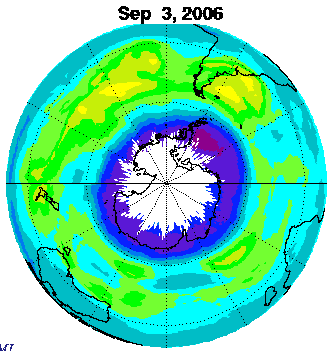
|
|
Sep 4,2005
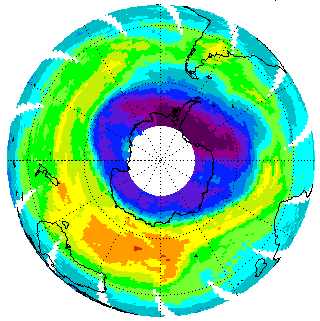
|
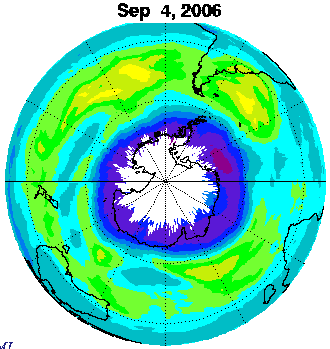
|
|
Sep 5,2005
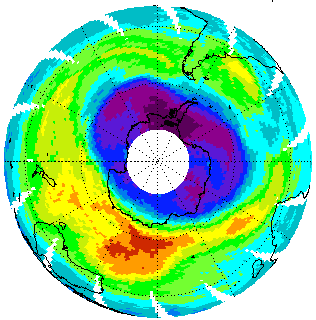
|
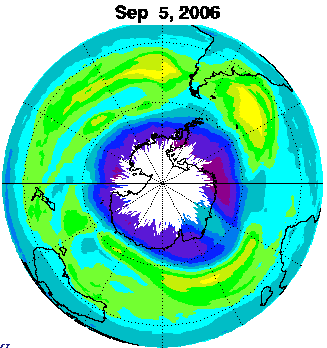
|
|
Sep 6,2005

|
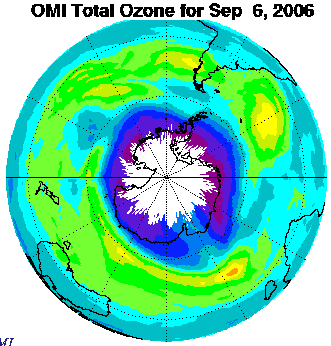
|
|
Sep 7,2005
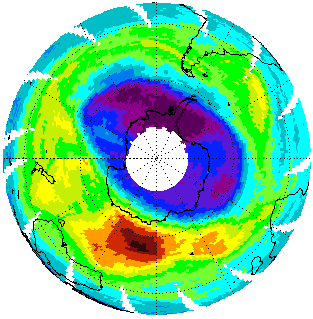
|
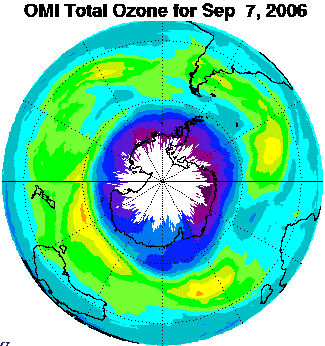
|
|
Sep 8,2005
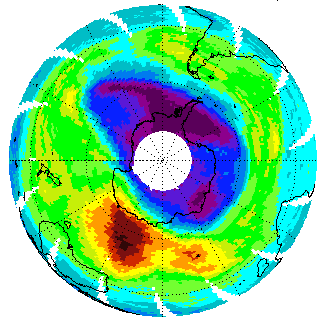
|
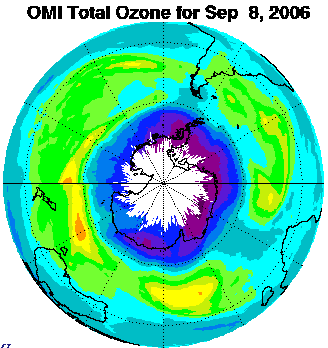
|
|
Sep 9,2005
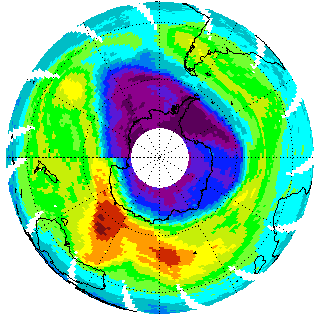
|
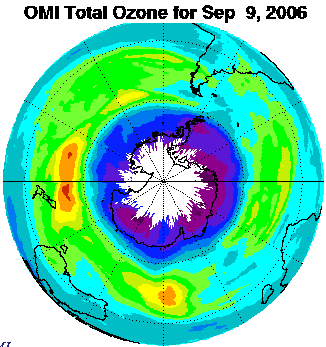
|
|
Sep 10,2005
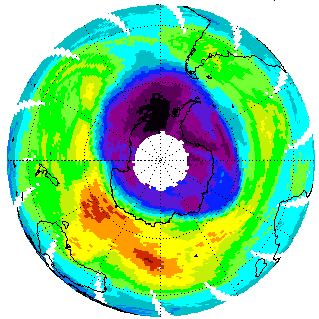
|
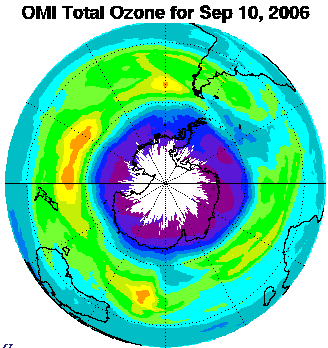
|
|
Sep 11,2005
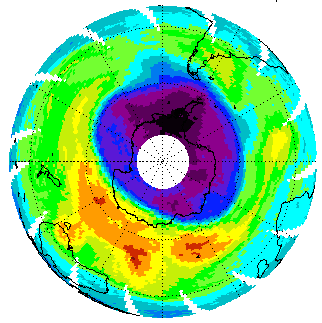
|
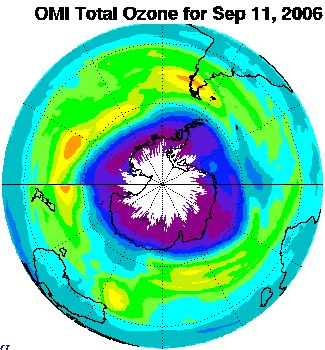
|
|
Sep 12,2005
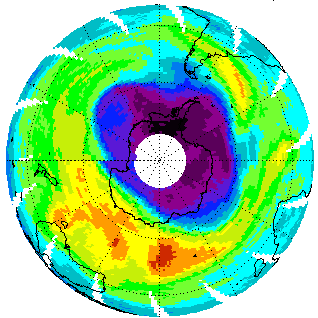
|
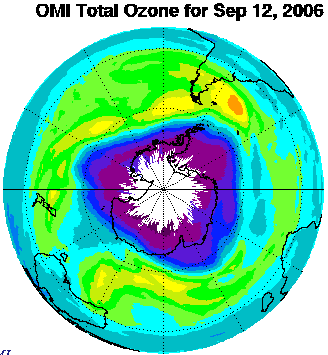
|
|
Sep 13,2005
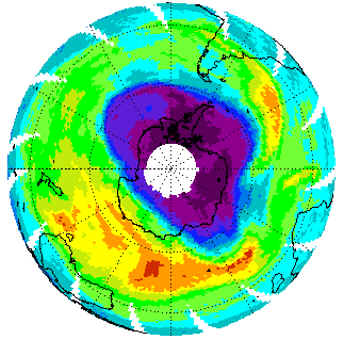
|
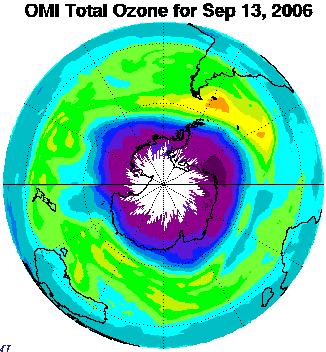
|
|
Sep 14,2005
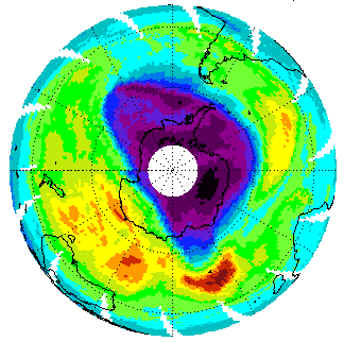
|
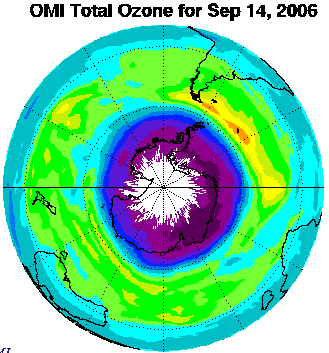
|
|
Sep 15,2005
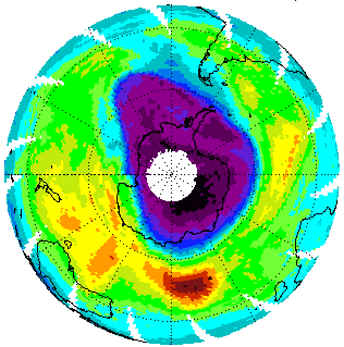
|
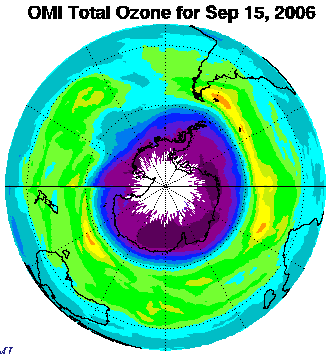
|
|
Sep 16,2005
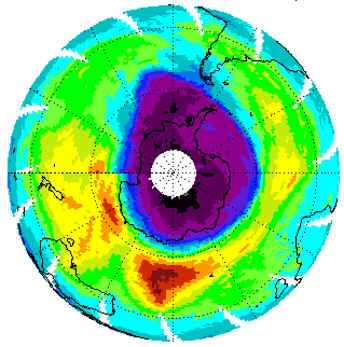
|
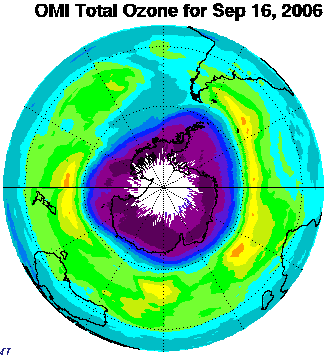
|
|
Sep 17,2005
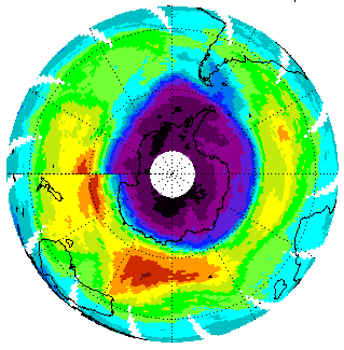
|
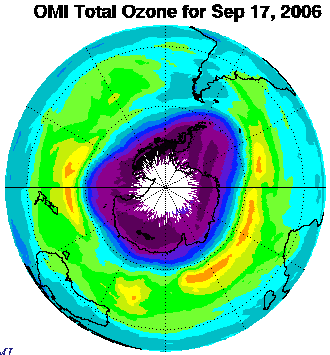
|
|
Sep 18,2005
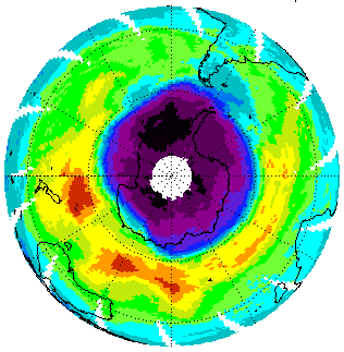
|
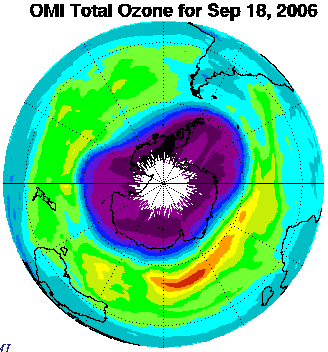
|
|
Sep 19,2005
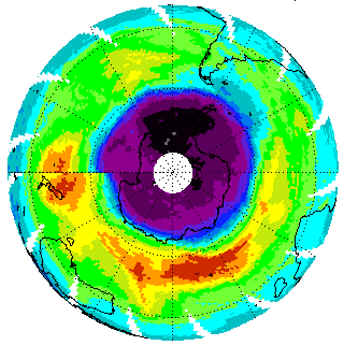
|
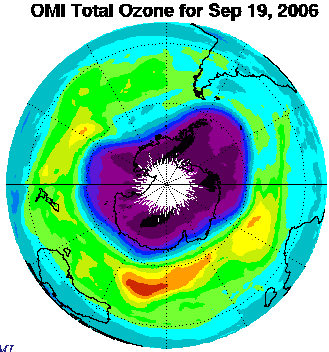
|
|
Sep 20,2005
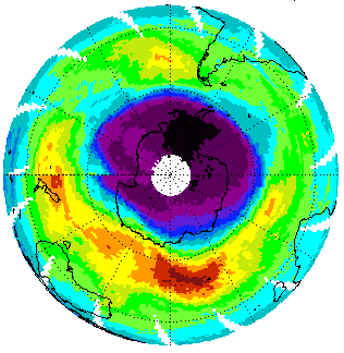
|
Sep 20,2006 Incomplete DATA
|
|
Sep 21,2005
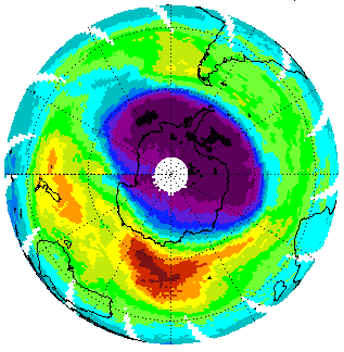
|
Sep 21,2006 Incomplete DATA
|
|
Sep 22,2005
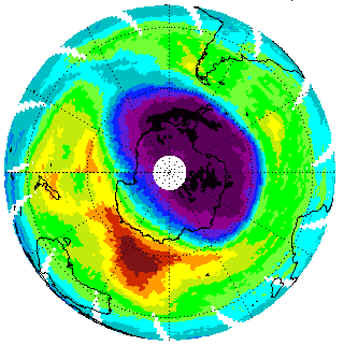
|
Sep 22,2006 Incomplete DATA
|
|
Sep 23,2005
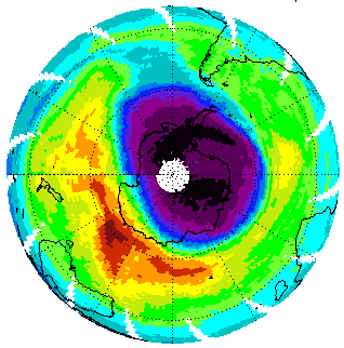
|
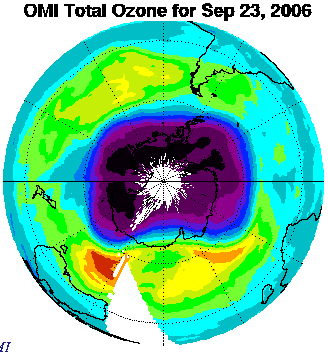
|
|
Sep 24,2005
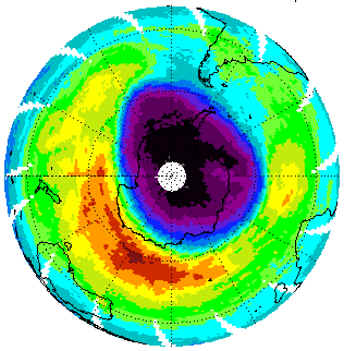
|
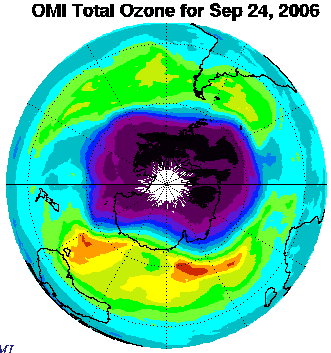
|
|
Sep 25,2005
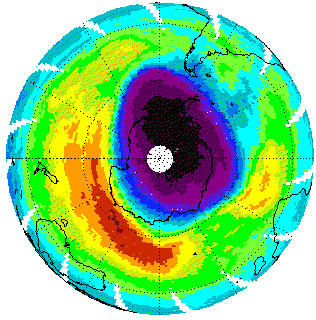
|
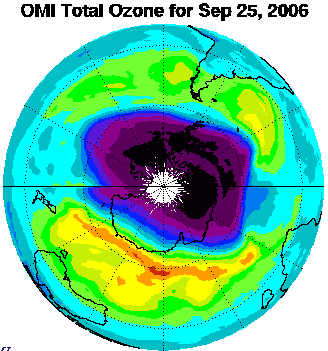
|
|
Sep 26,2005
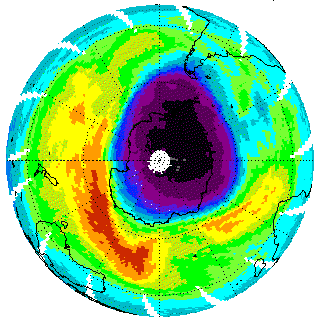
|
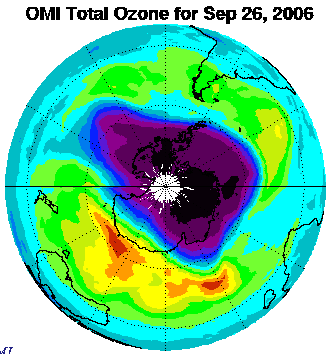
|
|
Sep 27,2005
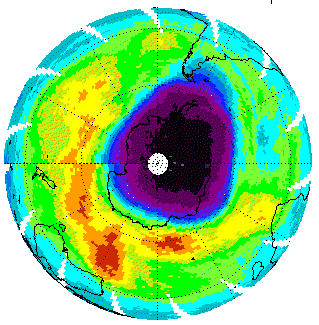
|
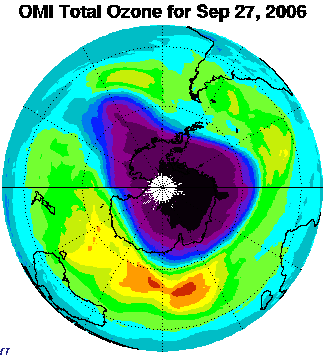
|
|
Sep 28,2005
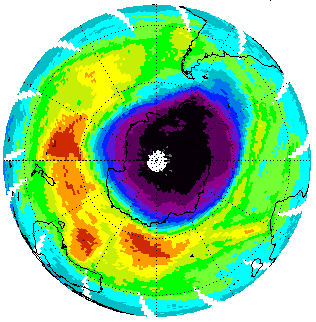
|
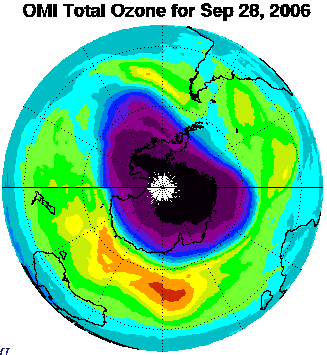
|
|
Sep 29,2005
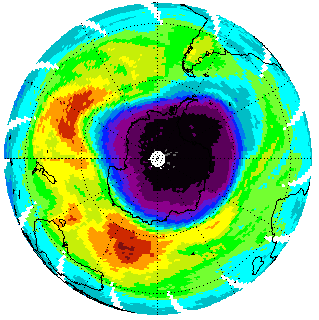
|
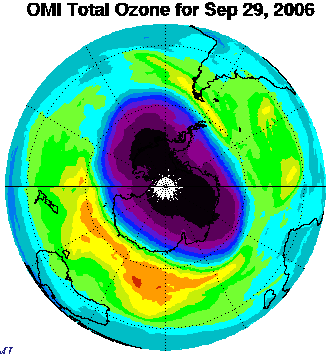
|
|
Sep 30,2005
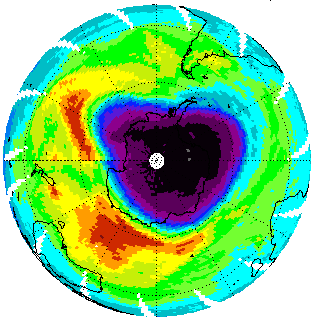
|
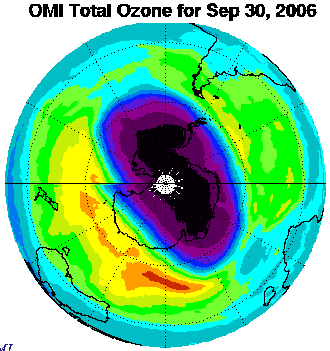
|
|





























































